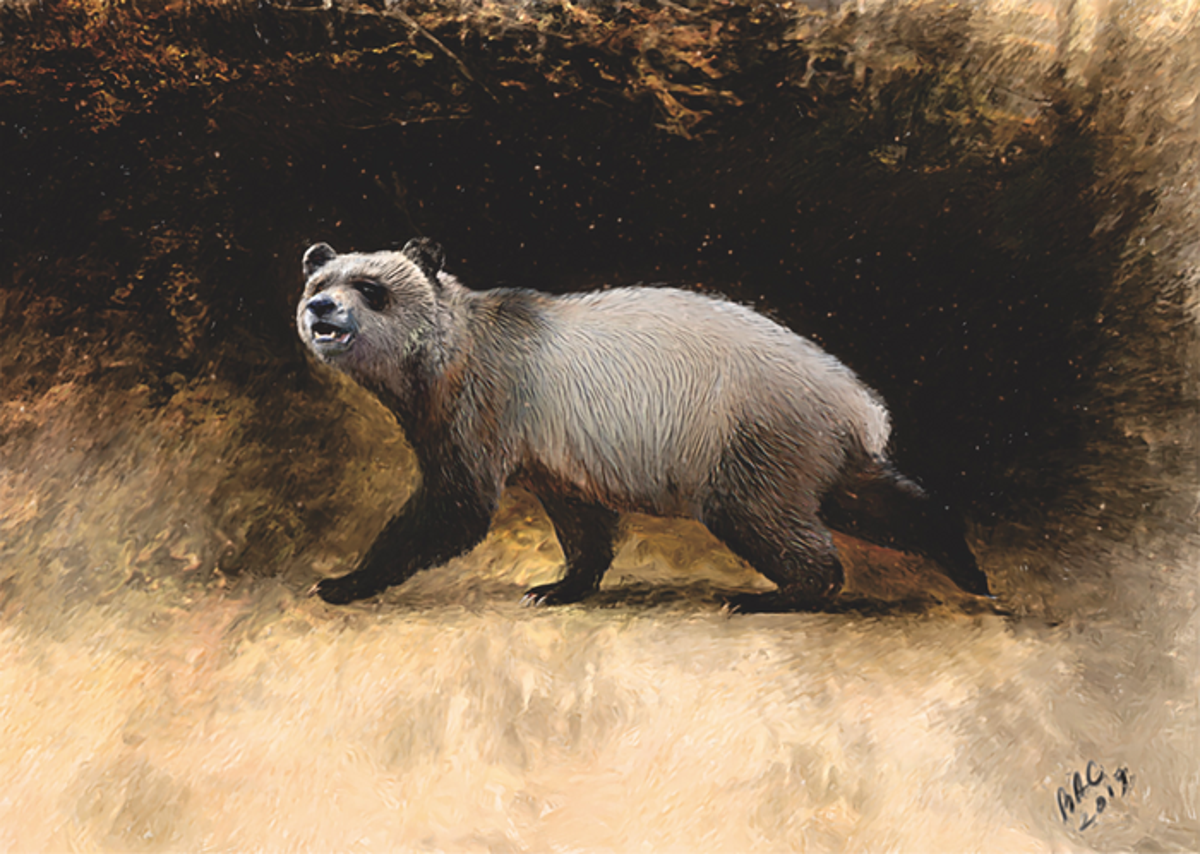Scientists Discover Europe's "Last Known" Giant Panda

Scientists have discovered a new species of giant panda in the wetlands of Bulgaria. Scientists say it may be the "last known" and "most evolved" species. of the type found in Europe.
Unlike its modern black and white relatives, researchers, including those from the Bulgarian Academy of Sciences,A. He said that he did not rely on bamboo.
"It is not a direct ancestor of the modern giant panda genus, but it is closely related," explains study co-author Professor Nikolai Spasov of the Bulgarian National Museum of Natural History.
Findings published last week in the Journal of Vertebrate Paleontologysuggest that ancient pandas likely ate softer plant material, suggesting that this group This is consistent with the general trend of increasing dependence on plants during the evolution of humans. history.
"This discovery shows how little we still know about ancient nature, and how historical discoveries in paleontology can lead to unexpected consequences even today." It shows," Dr Spasov said.
Scientists have evaluated the upper carnivorous tooth and upper canine tooth, first unearthed in northwestern Bulgaria in the 1970s and added to the museum's fossil treasures.
"There was only one vaguely handwritten label. It took me years to figure out its provenance and age. Then I realized that this was an unknown giant panda fossil." It took me a long time to realize that," said Dr. Spasov.
The tooth was found in a coal deposit and had a blackened color. This indicates that pandas lived in forested wetlands.
At this time in the late Miocene, about 10 million to 4.5 million years ago, fossils of the staple grass that supports modern pandas are rare in Europe, researchers say.
Fossil records and tooth tips from this period suggest that pandas at that time did not have teeth strong enough to crush tree trunks.
Instead, ancient pandas likely ate softer plant material, scientists say.
"Possible competition with other species, particularly carnivores and possibly other bears, is a major concern for giants. He explains that pandas specialize in plant foods in humid forest conditions. ,” Dr. Spasov said.
However, researchers suspect that the teeth provided "sufficient protection against predators."
Since the canine teeth are comparable in size to modern pandas, scientists speculate that ancient pandas were similar in size or slightly smaller.
According to them, the species may have become extinct due to climate change, most likely due to the "Messinian salinity crisis." This is an event in which the Mediterranean basin dried up and the surrounding terrestrial environment changed significantly.
"Even if A. niklovi were not as specialized in habitat and food as modern giant pandas, fossil pandas are well specialized and their evolution has It was related to wet forest habitats," said Dr. Spasov.
"Climate change, which led to aridification at the end of the Miocene in southern Europe, likely had a negative impact on the last European panda presence," he added.
This study narrowed down the identity of the beast behind the fossil specimen to one belonging to the Ailropodini, a tribe of the Ursididae.
This group of animals , best known by its sole living representative, the giant panda, but scientists say it once lived in Europe and Asia.
As one possible evolutionary trajectory, researchers suggest that Aillopodini may have left Asia and reached Europe inA. nikolovi . thinking about.
However, they cautioned against this hypothesis, stating that paleontological data indicate that "the earliest members of this group of bears were found in Europe." 57}
This indicates that the group may have developed in Europe and then headed to Asia, where the ancestors of another genus Ailurarctosdeveloped.
These early pandas may have later evolved into the modern giant pandas, scientists say.
No comments:
Post a Comment